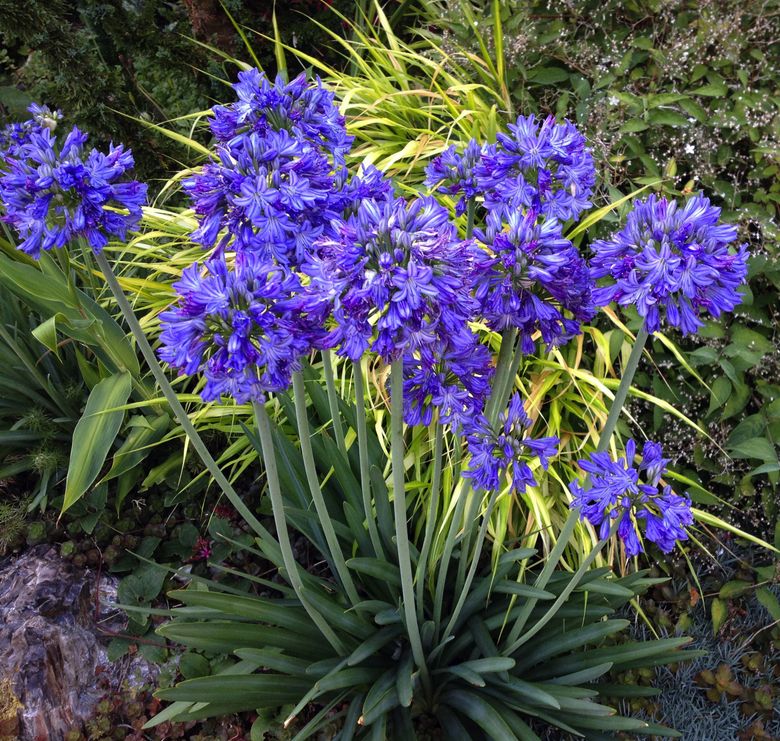Common Agapanthus Problems and How to Address Them
Wiki Article
Understanding the Art of Agapanthus Treatment: Important Steps for Healthy And Balanced Growth and Dynamic Blooms
In the world of gardening, the cultivation of agapanthus stands as a rewarding venture for those that seek to nurture these classy flowering plants. From choosing the right selection to understanding trimming strategies, the journey towards cultivating prospering agapanthus plants is diverse and holds the key to unlocking the full possibility of these herb treasures.
Selecting the Right Agapanthus Variety

When choosing the appropriate Agapanthus selection for your garden, take into consideration aspects such as environment suitability, flower color, and growth routine. Agapanthus, typically referred to as Lily of the Nile or African lily, is available in a variety of colors ranging from tones of blue and purple to white. Select a bloom color that complements your existing garden palette to create a harmonious landscape. Additionally, think about the climate in your area to ensure the Agapanthus selection you choose can thrive in your details problems. Some selections are much more forgiving of cool temperature levels, while others favor warmer climates. Comprehending the development routine of various Agapanthus ranges is important for proper placement within your yard. Some ranges have a clumping development behavior, perfect for containers or borders, while others have an even more spreading nature, ideal for ground cover or mass plantings. By very carefully evaluating these aspects, you can pick the best Agapanthus variety to enhance the elegance of your garden.
Perfect Growing Conditions
Considering the ideal ecological needs is vital for effective Agapanthus growing. Agapanthus grows in well-draining soil with a slightly acidic to neutral pH level. When planting, select a location that obtains complete sunlight to partial color. In hotter environments, offering some mid-day shade can prevent scorching of the fallen leaves. Agapanthus plants are sensitive to cool temperatures and should be shielded from frost during cold weather.To make certain healthy development and vivid blossoms, plant Agapanthus light bulbs at a deepness of about 2-4 inches and room them 8-12 inches apart. Mulching around the base of the plants helps maintain dampness and subdues weed growth.
Watering and Feeding Tips
Keeping appropriate dampness levels and supplying crucial nutrients are key elements in the care regimen for Agapanthus plants. When it comes to watering Agapanthus, it is essential to strike a balance. These plants choose continually moist dirt yet are susceptible to root rot if overwatered.Fertilizing Agapanthus is vital for advertising healthy and balanced development and respected blooms. Use a well balanced fertilizer, such as a 10-10-10 formula, in the very early springtime as brand-new development arises. By adhering to these watering and fertilizing ideas, you can ensure your Agapanthus plants grow and produce vivid, long-lasting blooms.
Pruning Strategies for Agapanthus
Trimming Agapanthus plants at the proper times and with correct techniques is essential for preserving their health and advertising optimum development and blooming. The optimal time to prune Agapanthus remains in late wintertime or early spring prior to new growth arises. Begin by removing any type of dead or yellowing fallen leaves near the base of the plant. Cut them as short as possible without resource damaging the arising shoots.Deadheading invested flowers can also reroute the plant's power into producing more flowers instead than setting seeds. If you desire to accumulate seeds for breeding, leave some flowers to fully grown and dry on the plant.
Keep in mind to make use of clean, sharp devices to make precise cuts and lower the risk of presenting illness. Agapanthus. Regular pruning will certainly assist maintain your Agapanthus looking healthy and cool while making certain an abundant display screen of gorgeous flowers
Managing Usual Parasites and Diseases
After ensuring appropriate pruning methods for Agapanthus, it is crucial to deal this content with common parasites and illness that can influence the health and vitality of these plants. One common bug that affects Agapanthus is the Agapanthus gall midge.Another usual concern is fungal leaf area, which presents as dark sores on the fallen leaves. To stop fungal conditions, guarantee good air blood circulation around the plants, stay clear of above watering, and eliminate any type of infected leaves promptly. Furthermore, Agapanthus plants can struggle with root rot if they are grown in badly draining pipes dirt. To avoid this, plant Agapanthus in well-draining dirt and avoid overwatering. By being cautious and taking timely action against diseases and parasites, you can assist your Agapanthus plants prosper and generate dynamic blossoms.

Conclusion
To conclude, mastering the art of agapanthus treatment includes selecting the explanation right variety, offering perfect planting problems, proper watering and fertilizing, appropriate trimming techniques, and resolving common pests and conditions. By adhering to these necessary actions, you can make certain healthy growth and lively blossoms for your agapanthus plants. Keep in mind to consistently monitor and maintain your plants to advertise their general wellness and longevity.To make certain healthy and balanced growth and vivid blossoms, plant Agapanthus light bulbs at a depth of about 2-4 inches and room them 8-12 inches apart. By following these watering and fertilizing pointers, you can ensure your Agapanthus plants flourish and generate lively, resilient flowers.
One typical parasite that impacts Agapanthus is the Agapanthus gall midge. Additionally, Agapanthus plants can endure from origin rot if they are planted in improperly draining pipes soil. By adhering to these necessary steps, you can ensure healthy development and vivid flowers for your agapanthus plants.
Report this wiki page